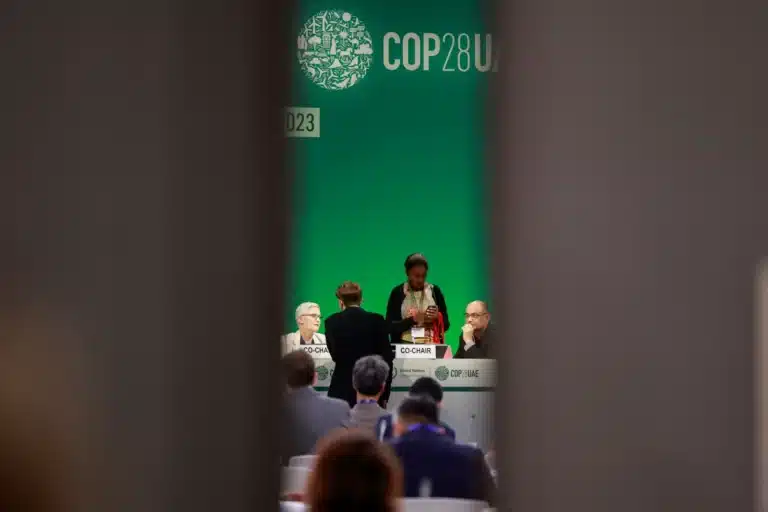This article was originally published in Petroleum Economist’s Outlook 2018.
In 2018, the Trump administration will execute on its ambitious deregulatory agenda to unleash American “energy dominance”—and global energy markets won’t notice the difference.
For President Donald Trump, “energy dominance” means more American energy production and exports—especially oil, gas and coal.
To further that goal, Trump signed a sweeping executive order directing agencies to roll back the Clean Power Plan, President Obama’s signature climate policy to limit greenhouse gas emissions from power plants; reverse regulations on methane emissions; revisit the metric known as the “social cost of carbon” that seeks to quantify the damages from CO2 emissions; lift the temporary moratorium on coal leasing on federal lands; and end consideration of climate change in environmental reviews. Elsewhere, Trump ordered new offshore areas to be opened to drilling and an easing of fuel-economy standards, among other actions.
Although done with great fanfare, the effect of scrapping all these regulations on US energy supply will be modest.
Reviving the coal industry holds a special place at the core of Trump’s energy policy. Yet undoing rules such as the Clean Power Plan or lifting the temporary moratorium on coal leasing on federal lands won’t do much to lift production or bring jobs back to coal country—an oft-repeated promise from the administration. Coal’s decline has been driven by cheap shale gas, weak electricity demand, falling renewables costs, and the collapse in metallurgical coal prices resulting from the slowdown in Chinese demand. A recent paper I co-authored found that even if all the actions in Trump’s executive order are implemented, coal still won’t be able to mount a comeback. If gas remains cheap and renewable costs keep plummeting, coal will continue to fall, and the greenhouse-gas targets in the Clean Power Plan will be met even if the rule is scuttled.
Trump also wants to help boost oil and gas output, though there’s only so much that can be done from the White House. Easing rules regulating oil and gas production may help output on the margin, but US oil supply has been rising sharply regardless because of dramatic technology and productivity improvements by American shale producers. Similarly, the administration can open up the Arctic to drilling, but few if any companies want to drill in the challenging environment of Alaska’s icy waters in today’s depressed market.
Moreover, it remains to be seen how much of the sharp deregulatory push will survive judicial challenge. Recent efforts by the Department of Interior and the Environmental Protection Agency to delay or repeal Obama-era rules related to oil and gas methane emissions have already been reversed by the courts. More legal challenges will come in 2018.
Trump’s withdrawal from the Paris climate agreement damages US international credibility, but as the agreement consisted of voluntary national contributions, the Trump administration would have been free to curb climate policies even if the US hadn’t welched.
That’s not to say energy policy is irrelevant. For example, Obama’s fuel-economy increase is set for a “mid-term review” in 2018, and Trump has signalled he wants to roll back the next round of increases set for 2022-25. That could boost oil demand in America by several hundred thousand barrels a day by 2025.
Power play
Another highly consequential proposed policy change to watch in 2018 is Energy Secretary Rick Perry’s recent order to the Federal Energy Regulatory Commission to consider guaranteeing recovery of costs to prop up coal and nuclear plants that would otherwise be uneconomic to operate. The ostensible rationale for the proposal is grid reliability—although there’s scant evidence that the growth of natural gas and renewables at the expense of coal and nuclear has led to reliability problems, as Perry’s own Department of Energy found in a recent study. If the proposed rule were adopted, it would represent the largest change to electricity-market design in decades.
While the impact of energy-policy changes on global markets may be limited, policy shifts beyond energy will be far more consequential—namely those related to sanctions, trade, tax, and foreign policy.
On sanctions, Trump’s decertification of the Iran nuclear deal raises the possibility that sanctions could return on investment in Iran’s energy sector or on purchases of Iranian oil, which would stymie future production growth and pull barrels out of a tightening market. And even if sanctions aren’t re-imposed, the uncertainty around their future will have a chilling effect on new investment in Iran’s oil and gas sector.
In Russia, recent Congressional legislation gave Trump discretion to sanction companies that invest in new Russian pipeline routes to Europe. But, despite continued official US opposition to the Nord Stream 2 pipeline project, it’s unlikely that the Trump administration will exercise that authority, absent a sharp escalation in political pressure stemming from former FBI director Robert Mueller’s investigation into potential Russian collusion related to the 2016 election.
As for Venezuela, the Trump administration previously considered sanctioning oil sales in response to president Nicolás Maduro’s power grab, but eventually decided against doing so. More aggressive sanctions seem unlikely unless circumstances materially change in Caracas, although the rumoured departure of Secretary of State Rex Tillerson may remove a key voice within the administration arguing for restraint.
Trade policy could also have significant effects on global oil and gas markets. Under US law, exports and imports of natural gas with free trade agreement (FTA) countries undergo a very simple regulatory process. But those with non-FTA countries are subject to a far longer, costlier, and more burdensome regulatory approval process. The Trump administration’s withdrawal from the Trans-Pacific Partnership, therefore, was a lost opportunity to ease trade with gas-hungry Asia. Moreover, Trump’s threats to cancel the North American Free Trade Agreement (Nafta) raise the risk of new regulatory burdens on sharply rising US pipeline gas exports to Mexico. On the other hand, renegotiating Nafta, which barely covered energy, presents an opportunity to liberalise energy trade and investment, boost American exports of natural gas and refined products to Mexico, and sturdy Mexico’s energy-sector reforms against shifting domestic political winds.
The Trump administration and Congressional Republicans have made tax reform a top priority, with any action likely to be in 2018. Comprehensive tax reform has the potential to put incentives for oil, gas and coal, as well as renewable energy, on the chopping block. But structural reform now seems less likely than a more straightforward tax rate cut with limited offsetting revenue.
More broadly, Trump’s tough-talking brand of foreign policy—from North Korea to Iran and Venezuela—elevates geopolitical risks for energy markets. Rising tensions around North Korea and fears of military conflict, for example, pose heightened risks to the region’s economies and may drive more market volatility next year.
At the same time, the effects of Trump’s “America First” economic nationalism—from abandoning trade and economic pacts to withdrawing from the Paris climate agreement—will continue to ripple through energy markets in 2018. Traditional allies worry about America’s reliability and are thus hedging their bets. Saudi Arabia’s recent embrace of Russiais just one example. As the US retreats from the global stage, China clearly sees an opportunity to step into the void, with major ramifications for the energy sector. Beijing is drawn towards new opportunities in financing energy and infrastructure projects around the world through its ambitious “belt and road” initiative, strengthening its alliance with Europe to “lead the energy transition”, and possibly even buying a stake in Saudi Aramco.
In short, market forces will matter far more to the outlook for US production and exports in 2018 than the Trump administration’s deregulatory measures and push for “energy dominance”. But other US domestic and foreign policy shifts may create uncertainty and volatility in the year ahead. There’s nothing new about geopolitical risk to the energy sector. What’s new for 2018 is how much of that risk now emanates from Washington DC.






